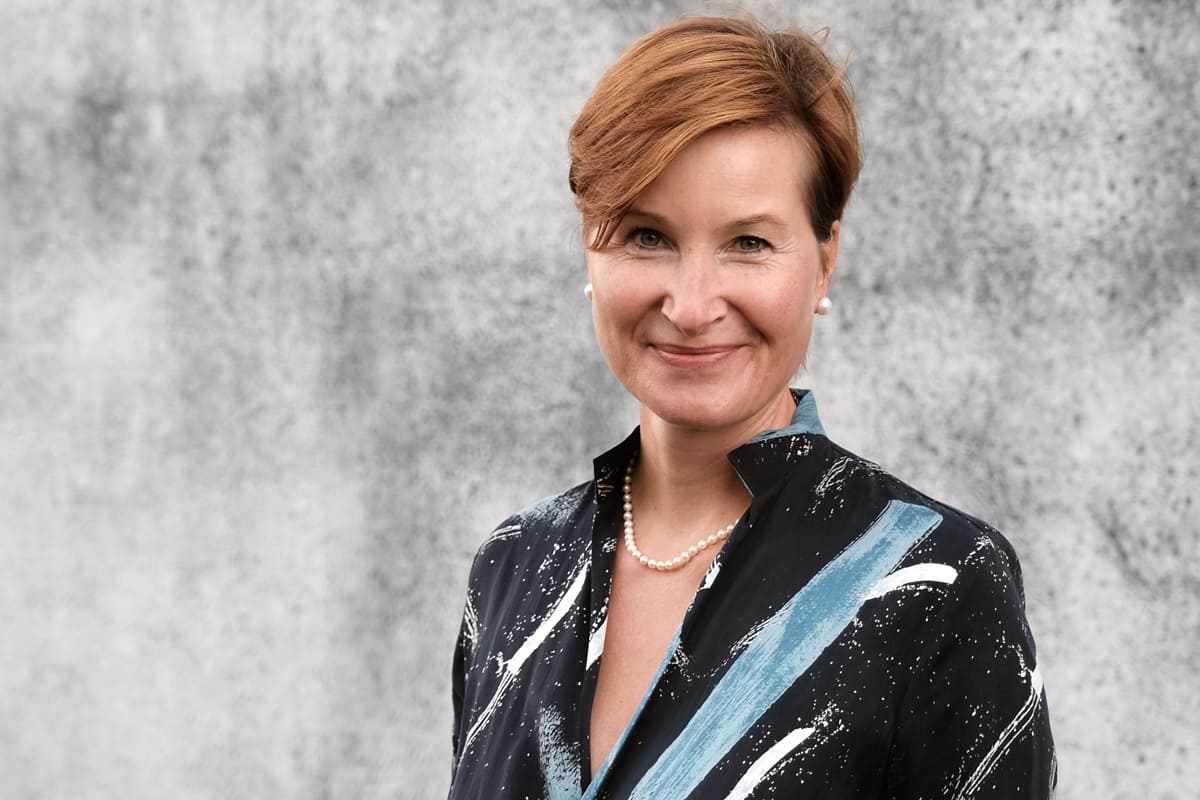Continuing Education | Conflict Management
Conflict management from A to Z
From Sabine Walter, Head of netzwerk managementberatung | coaching
Conflicts - whether visible or invisible - cost organisations and our society money. This makes the role of individuals' ability to deal with conflict, especially leaders, all the more central. The ability to deal with conflict is a central leadership competence. But it is often misinterpreted and thus its key role for high leadership effectiveness underestimated. By no means do people with a strong capacity for conflict have a permanent desire to argue. Rather, these people have a healthy self-esteem and a stable self-confidence that enables them to recognise conflicts consciously and from within themselves and to deal with them constructively. In this article we give various recommendations that enable you to recognise, analyse and constructively address conflicts in order to invite a joint search for solutions.
Characteristics of a pronounced ability to deal with conflict
A pronounced ability to deal with conflict usually results in greater leadership effectiveness. This becomes visible in the following actions, among others:
- Even unpopular decisions are taken within a reasonable time.
- Feedback is actively used as a management tool and thus for further development.
- Perceptible tensions are addressed promptly and with confidence that they will be resolved.
- The development of new, if necessary also unusual approaches and ideas is encouraged.
- The best solution is argued for constructively and with the inclusion of different perspectives and points of view.
- Person and thing are separated in controversial disputes.
- People do not hold grudges. Conflict clarification strengthens the relationship level and the trust in a constructive coexistence.
What is conflict? Many equate conflict with Dispute the same. That is wrong. Strife can be an expression of conflict.
Conflict - Clarification of terms
Conflict comes from the Latin "confligere". This means "to collide" or "to clash". A conflict therefore arises when there is a Deviation between desire and reality there. Let's take a closer look at the different aspects of conflict.
Conflict management
Angst
Fear is the most common trigger point for conflict to arise. These fears include:
- the fear of not surviving
- the fear of not being safe (fear of novelty)
- Fear of rejection (i.e. the fear or worry of being excluded, not being liked or needed).
Conflict management
BeduCation level
Conflicts can arise on two levels, on the factual level and on the relationship level. Experience shows that the cause of most conflicts is a hurt relationship levelEven though in a professional context these conflicts are usually expressed on a factual level, e.g. by delaying decisions, not supporting certain projects or procedures, or withholding information.
Conflict management
Cchances of conflict
Winston Churchill once said: "If two people always have the same opinion, one of them is superfluous". From this quote it becomes visible that conflict also carries opportunities. We explain some of these opportunities below:
- Groups or teams grow together: By engaging with each other, there is a chance that an understanding of the different perspectives will emerge, differences will be overcome and a common ground can be redefined.
- Issues are considered more comprehensively: Different points of view expressed in a controversial discussion open up the opportunity to look at an issue from several perspectives and thus more comprehensively.
- Commonalities are established: The result of a balancing process can be that the conflicting parties move towards each other and find a compromise.
- Status quo is maintained: A dispute can also serve to maintain the actual state of affairs. For this purpose, it is important that the conflict is addressed at an early stage.
- Change arises: If the current situation is perceived as intolerable, this conflict can give rise to an urge to change things.
Conflict management
Dynamics of conflicts
Four mechanisms are at work in every conflict:
- Irritation: Something is different than expected. A situation or behaviour of one or more people causes others to be upset.
- Distorted perception: A tunnel vision develops. Objectivity is omitted.
- Social contagion: Allies are sought to strengthen one's own position.
- Loss of empathy: Tone and pace intensify. Stereotypical behaviour increases. Change of perspective is no longer possible without third party interaction.
Conflict management
Iin Conflict Management
The attitude with which we see ourselves and the other determines whether we can resolve a conflict constructively. It applies: The other is part of the solution.
Conflict management
FPut on researcher's goggles
It happens again and again that our fellow human beings react differently than we expected or that the way they deal with us does not correspond to how we would deal with them. This results in a violation of values. Desire and reality diverge - by definition a conflict.
Whether this irritation gains momentum and the conflict escalates depends primarily on us in this case.
If we manage to put on the "imaginary researcher's glasses" in such situations and look at the situation from a meta-level in a value-free way, then we can usually decide how to react in a considered way and with a benevolent action:
- Ignore?
- Address constructively?
- Defuse with humour?
All this can contribute to a conflict not being able to unfold its dynamics at all.
Conflict management
The conflict levels according to Ylasl
A conflict escalates in several stages. The Austrian organisational consultant and conflict researcher Friedrich Glasl has defined 9 escalation stages in his model.
At levels 1-3, the conflict between the parties can usually still be resolved by themselves. From stage four, i.e. the formation of coalitions, the search for allies, the formation of small groups, it is necessary to intervene. This is where you as a leader are challengedThe aim is to raise the conflict with the parties involved, to create awareness of the problem and to work out a solution together with the parties.
From level 7 onwards, the conflict parties are in a lose-lose situation. A solution is hardly possible here.
For those who want a vivid presentation of Glasl's model, the film "The War of the Roses" is recommended.
Conflict management
Hmain types of conflict
Three main types of conflict are distinguished in the literature: Social Conflicts, Structural Conflicts and Internal Conflicts
Social conflicts are, according to Prof. Glasl, an interaction in which it is There are incompatibilities that are perceived as impairments. Inner conflicts are Incompatibilities within a person. The causes of structural conflicts lie in the structure and process of social systems, such as organisations. Conflicts over goals, distribution (e.g. of resources) or roles can be structural conflicts.
Conflict management
Interestlessness - a possible symptom of conflict
There are different types of behaviour by which conflicts can be recognised. Lack of interest is one such behaviour. It can be manifested through Yawning, sluggish discussions, lack of participation or lack of taking responsibility. clarify. Other signs of conflict include:
- Aggression
- insulting comments
- Irony or sarcasm
- intensive troubleshooting
- Resistance
- Frequent contradiction: Yes, but
- Underperformance
- Non-recognition of good performance
- Conformity
- Say yes
- Talking out of turn
- Stubbornness
- Rigid adherence to one's own point of view or previous approaches
- Pedantic compliance with regulations
- Avoidance
- Contact avoidance
- High absenteeism
- Request for transfer
- Repeated absence from team events
- Formalities
- Elaborate formal arrangements for common affairs
- emphasising written communication
- Group dynamics
- Cliquing
- Rumours / Gossip
Conflict management
„Ja / Yes, but" and "No - yet".
Both "games" are part of a conflictual dispute and lead to blockages in conversation and - if they are not resolved - they escalate. The best way to resolve these rhetorical games is through open questions. Below are some examples of this:
- How do you arrive at that assessment?
- What does it take to make it work?
- What exactly do you base your statement on?
- What solution do you propose?
- When can you start thinking about the topic?
- What specifically do you want from me?
Conflict management
KLeast common denominator
Finding the lowest common denominator can be a start to resolving a conflict situation. It helps to detach oneself from the different opinions and positions and look at the goal level? What is or what could be a common goal that both conflict parties are pursuing?
Conflict management
LAsk solution-oriented questions
Resistance that manifests itself through so-called killer phrases can have various causes of conflict. It can be defused verbally by solution-focused questioning:
- You can't!
- I can't decide that!
- It doesn't work like that!
- The procedure is moronic!
- How could it work?
- Who can decide?
- How do you think it could work?
- How would you proceed?
Of course, in solution-focused questioning, it is also important in which Sound and with which posture you ask the questions. When you honest interest in the other person's response, your tone will also be appropriate and contribute to a constructive conversational atmosphere.
Conflict management
Mediator
It is advisable to use a mediator in advanced conflicts. This person mediates between the conflict parties from a neutral position. The work of a mediator has a chance of success especially if the conflict parties agree to the use of a mediator.
Conflict management
NSustainable conflict resolution
For a conflict to be sustainable solved can be resolved, it must be resolved at the level at which it arose, i.e. either at the factual or at the relationship level. Finding this out can sometimes be difficult, as many conflicts that show up on the factual level have their origin on the relationship level.
Therefore, a conflict analysis is central in order to Cause find out. You should at least ask the following questions during the analysis:
- What exactly happened?
- When?
- Who was and is involved?
- When was the situation any different?
- What has happened in the meantime among the various conflict parties and in the common environment that could have triggered the conflict?
Conflict management
Objectivity
Looking at a conflict in a value-neutral and objective way in a first step, without taking sides directly with one of the parties involved, is certainly one of the greatest challenges. If you as a leader cannot maintain this objectivity, use an external person from your company or an external mediator to resolve the conflict.
Since a conflict very often expresses the desire of the parties to be heard and seen, it is important to fulfil this desire in order to resolve the conflict. A mediator pays close attention to this and, from his or her neutral and objective stance, can listen and pay attention to each conflict party more easily than someone who is too close to the conflict parties.
Conflict management
PSeparate person and thing
A central ability to prevent conflicts from developing in the first place or to resolve them successfully if they do exist is to separate the person from the thing. People who have difficulties with this bring any conflict to the relationship level on their own. The inner attitude prevails: "He did that because he wanted to hurt me / doesn't like me / wants to get back at me.
This can lead to a situation that quickly gains momentum. It can only be stopped if it is addressed immediately and brought back to the issue level through open questions. The "SAG ES structure".
Conflict management
Rollen conflicts
Role conflicts occur in many teams. If they persist over a long period of time, they not only weaken team spirit but also work productivity. Role clarity is easy to establish:
- Who takes care of what?
- What do decision-making processes look like?
- Who plays what role in these processes?
Conflict management
„Tag es - structure"
With the "Say it - Structure", irritations can be address constructively.
S: Say / Describe point of view (own perception, I-messages)
A: Auswirkungen beschreiben - Describe effects
G: Gefühle benennen - Naming feelings
E: Erfragen - Asking how the other person sees it
S: Schlussfolgerungen ziehen - Draw conclusions (work out a solution together, create commitment).
Conflict management
Tempo down
To counteract the escalation of conflicts, it is advisable to take the tempo out of arguments. This can be achieved, for example, by:
- the Paraphrase of what has been said: You say you feel betrayed. I'm sorry to hear that. What exactly do you make that out to be?
- the Verbalise of emotion: I can tell you're upset. I am sorry for that.
- the Summarise of what has been said:
- Common ground: We agree on ...
- Differences: There is still disagreement on ...
- Next steps: The next step is to ...
- the Adjourn of talks to the next day with the chance that emotions have died down and each party to the conflict has had a chance to "sleep on it for a night".
By the way, sitting out conflicts does not fall into the category of "speed up". Ignorance fuels conflicts rather than helping to de-escalate them.
Conflict management
UEliminate causes
As mentioned at the beginning of the article, the most common cause of conflict is our fear. We can only counter this fear with confidence: self-confidence, confidence in the teamwork, confidence in the continuity of the company. If you, dear leaders, focus on fostering a culture of trust, you are doing more than enough. We have described the concrete starting points in various articles:
- The essence of effective leadership
- Equality: an entrepreneurial success factor
- Be a lobster! On personal growth and learning organisations.
- Leading with confidence
Conflict management
VEnsure understanding - prevent misunderstandings
Misunderstandings are irritations that can be avoided if all parties involved in the conversation make sure that a common understanding is ensured. This can be achieved with a three-stage discussion structure:
- Pick up: The first step is to verbally pick up what the interlocutor has said.
You say, ... / You say, ... You ask, ...
You say, ... / You say, ... You ask, ... - Classify: In the second step, this information is classified in relation to the topic to be clarified.
This is an important point.
That is a relevant question.
This is a new aspect. - Link: In the third step, the conversation continues with the aim of securing understanding and avoiding misunderstandings.
I would like to understand more precisely...
What specifically ...?
How exactly ...?
Conflict management
Win-win solution
A win-win solution is easier to achieve if we detach ourselves from the positions of the conflicting parties and understand the underlying goals. Why does the person take this position? What is the reason (on the relationship level)? What basic human need (MASLOW) has been violated or wants to be served? A model that depicts the transfer of positions to goals to win-win solutions in a comprehensible way is the HARVARD negotiation concept. HARVARD negotiation concept.
The likelihood that the parties to the conflict are still open to a win-win solution is greatest in the first four stages of the conflict. Once one party has suffered a loss of face, working out a solution that both sides see as a win becomes much more difficult.
It is all the more important that the members of an organisation learn to address conflicts as quickly as possible in order to stop a dynamic. This also requires that you as a leader set a good example and address behaviour that irritates you directly and constructively. In this way, you exemplify the desired behaviour that others can follow.
Conflict management
ZAvoid conflicts of objectives
Conflicting goals are a frequent trigger of conflicts. Conflicting goals can be avoided by going through a transparent goal-setting process as an organisation and making sure that the different team and individual goals feed into the overall goal. If you, as an organisation, succeed in getting teams to actively participate in defining their goals, they are more likely to identify with them, stand behind them, be seen and heard, and have much more confidence in achieving them.



